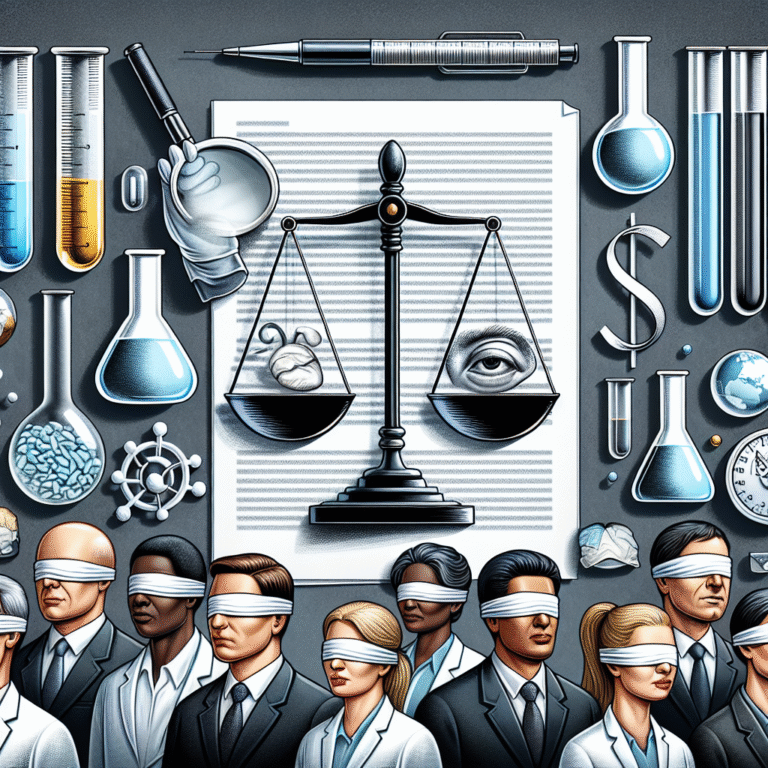
Introduction
In a world characterized by uncertainty and rapid change, the ability to anticipate outcomes and make informed decisions is more vital than ever. We navigate myriad choices every day, from personal finance to healthcare to business strategy. The question looms: how do we predict the future with any degree of accuracy? Enter inferential statistics—an analytical powerhouse that serves as our compass in the sea of data, helping us make educated predictions about future outcomes. In this exploration, we will uncover the essential role inferential statistics plays in predicting the future, how it equips us to make informed decisions, and illuminate real-world applications through compelling case studies.
Understanding Inferential Statistics
What is Inferential Statistics?
At its core, inferential statistics involves using data from a sample to make generalizations or predictions about a larger population. While descriptive statistics describe data through numeric summaries or visualizations, inferential statistics allows us to draw conclusions and make predictions that extend beyond the immediate data set. This method relies heavily on probability theory and various statistical tests to provide insights into trends, relationships, and the likelihood of future events.
Why is Inferential Statistics Important?
The significance of inferential statistics is manifold:
-
Decision-Making: It forms the backbone of many decision-making processes, offering a framework for evaluating potential outcomes and risks.
-
Resource Allocation: Businesses and governments can allocate resources more effectively by using inferential statistics to forecast future demands or trends.
-
Risk Assessment: By estimating the probability of different scenarios, inferential statistics aids in risk management, allowing better preparedness in uncertain conditions.
- Scientific Research: Many scientific advancements rely on hypotheses testing and generalizing findings from samples to populations, making inferential statistics indispensable.
This preliminary understanding sets the stage for deeper dives: how can we use inferential statistics to genuinely enhance our ability to predict the future?
The Mechanics of Prediction in Inferential Statistics
Sampling Methods: The First Step toward Prediction
The journey of making informed predictions begins with sampling. Selecting a representative sample is critical. There are various sampling methods, including:
- Random Sampling: Each member of the population has an equal chance of being included.
- Stratified Sampling: The population is divided into sub-groups, and samples are taken from these groups to ensure diversity.
Table 1: Sampling Methods Overview
| Method | Description | Advantages |
|---|---|---|
| Random Sampling | Equal chance for each population member | Reduces bias |
| Stratified Sampling | Diverse representation from sub-groups | Enhances accuracy |
| Systematic Sampling | Selection based on a fixed interval | Simple and efficient |
Utilizing the right sampling method establishes the reliability of subsequent analyses and ultimately influences prediction outcomes.
Hypothesis Testing: The Framework for Predictions
Once data is gathered, hypothesis testing allows researchers to make decisions based on sampled data. This framework involves:
-
Formulating Hypotheses: The null hypothesis (no effect) and the alternative hypothesis (an effect exists) frame the inquiry.
-
Collecting Data: Data is gathered through experiments or observational studies.
-
Statistical Analysis: Tests—such as t-tests, chi-square tests, or ANOVA—are applied to assess significance levels.
- Making Conclusions: Based on the analysis, researchers either reject or fail to reject the null hypothesis, which helps predict future outcomes.
This structured approach provides a reliable basis for estimating population parameters and informing decision-making processes.
Regression Analysis: Linking Variables for Prediction
Regression analysis plays a pivotal role in exploring relationships between variables. By estimating how changes in one variable affect another, regression models help in forecasting.
-
Simple Linear Regression: Examines the relationship between two variables.
- Multiple Regression: Explores relationships among multiple variables, providing a more comprehensive view.
Chart 1: An Example of Simple Linear Regression
Insert chart illustrating a linear relationship between advertisement spend and sales revenue.
By harnessing these models, businesses can predict future sales based on spending patterns, or assess how weather changes impact agricultural yields.
Case Studies: Real-World Applications of Inferential Statistics in Predicting the Future
Case Study 1: Predicting Election Outcomes
The 2016 US Presidential Election illustrated the power of inferential statistics in predicting electoral outcomes. Polling organizations employed random sampling techniques to gauge voter sentiment.
-
Method: A combination of random sampling and stratified methods captured demographic variations.
-
Predictions: Many polls predicted a close race between Hillary Clinton and Donald Trump based on sample data.
- Outcome: Despite fluctuations in results, the trends helped shape campaign strategies and voter outreach.
Analysis: This case emphasizes how inferential statistics can both inform public sentiment and guide political strategy, although inaccuracies can have significant ramifications.
Case Study 2: Improving Healthcare Decisions
In healthcare, inferential statistics plays a crucial role in treatment efficacy studies. For instance, consider a recent study examining the effectiveness of a new drug.
-
Method: Researchers used random control trials to determine the drug’s success.
- Results: Through hypothesis testing, they concluded that the new drug significantly improved patient outcomes compared to the control group.
Analysis: This underscores how inferential statistics can revolutionize medical practices and lay the groundwork for evidence-based healthcare decisions.
Case Study 3: Financial Market Analysis
Financial institutions utilize inferential statistics to forecast market trends and assess risk.
-
Method: Time series analysis models market trends over a defined period.
- Predictions: Analysts use historical data to infer future price movements, helping investors make decisions regarding asset allocation.
Analysis: This case demonstrates the necessity of combining robust statistical methods with financial acumen to manage investments wisely.
Limitations of Inferential Statistics
Despite its pivotal role in predicting the future, inferential statistics isn’t without limitations. Some of these include:
-
Sampling Bias: Poorly constructed samples can lead to misleading conclusions.
-
Overgeneralization: Drawing broad conclusions from small samples risks non-representativeness.
- Assumptions: Many tests operate under specific assumptions (e.g., normal distribution), and violating these can skew results.
Conclusion
In an age where data is abundant, successfully predicting the future hinges upon our ability to translate that data into actionable insights. Inferential statistics offers a robust framework for understanding relationships, testing hypotheses, and making informed decisions that can significantly impact personal and organizational outcomes. By mastering these tools, you not only gain a deeper understanding of the world but also empower yourself to navigate future uncertainties with confidence.
As you embark on your statistical journey, remember: each data point holds a story, and each analysis is a roadmap to better decision-making. Embrace the power of inferential statistics, and you’ll find yourself significantly more equipped to predict the future and act accordingly.
FAQs
1. What is the difference between descriptive and inferential statistics?
Descriptive statistics summarize or describe the characteristics of a data set, while inferential statistics allow us to use that data to make predictions or generalizations about a larger population.
2. How can inferential statistics help in business decision-making?
By analyzing sample data, businesses can forecast trends, assess market demand, and evaluate consumer behavior, leading to more strategic and informed decisions.
3. What are the common pitfalls when using inferential statistics?
Common pitfalls include ignoring potential sampling biases, wrongly generalizing findings, and relying on statistical methods without understanding their underlying assumptions.
4. How does regression analysis differ from hypothesis testing?
Regression analysis examines relationships among variables to predict outcomes, while hypothesis testing assesses whether observed effects are statistically significant.
5. Are there ethical considerations in the use of inferential statistics?
Yes, ethical considerations include the accurate representation of data, avoiding manipulation for bias, and ensuring transparency in methodology and reporting findings.
With this guide, you are now equipped to harness the power of inferential statistics. Whether you’re navigating personal decisions or professional landscapes, these tools are invaluable for predicting the future and making sound, data-driven choices.
















